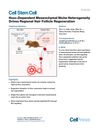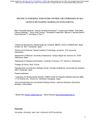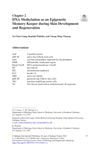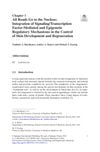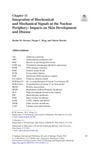How a Bird Gets Its Feathers: Insights from Chromatin Looping
June 2020
in “
Developmental Cell
”
chromatin looping B-keratin genes enhancers Chr25 cluster Chr27 cluster epigenetic mechanisms skin appendage development skin heterogeneity gamma-tubulin ring complexes cryo-electron microscopy microtubule nucleation hair follicle regeneration B-keratin epigenetics skin development skin diversity gamma-tubulin cryo-EM microtubule formation hair regeneration
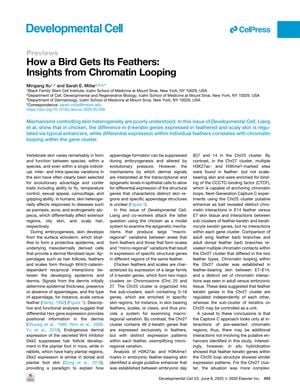
TLDR Feather patterns are influenced by enhancers and chromatin looping, and the structure of protein complexes important for hair growth has been detailed.
In 2020, Liang et al. conducted a study published in Developmental Cell that explored the epigenetic mechanisms of feather and scale formation in chickens, particularly focusing on chromatin looping's role in regulating B-keratin genes. They discovered that macro-regional variations, like the differences between feathered and scaly skin, are controlled by typical enhancers, while micro-regional variations within individual feathers are associated with chromatin looping in the gene cluster. The study indicated that the Chr25 cluster of B-keratin genes is likely regulated as a unit, whereas the Chr27 cluster genes are independently regulated through distinct chromatin interactions. This research enhances the understanding of skin appendage development and the epigenetic factors influencing skin heterogeneity.
In a separate study by Consolati et al. published in Cell Stem Cell in 2020, the researchers purified human gamma-tubulin ring complexes (yTuRCs) and used cryo-electron microscopy (cryo-EM) to reveal their structure at 4Å resolution. They found a left-handed helical assembly with 14 globular features, identifying y-tubulin and various GCP proteins, and provided detailed structural insights into yTuRCs, which are crucial for microtubule nucleation and processes like hair follicle regeneration.
